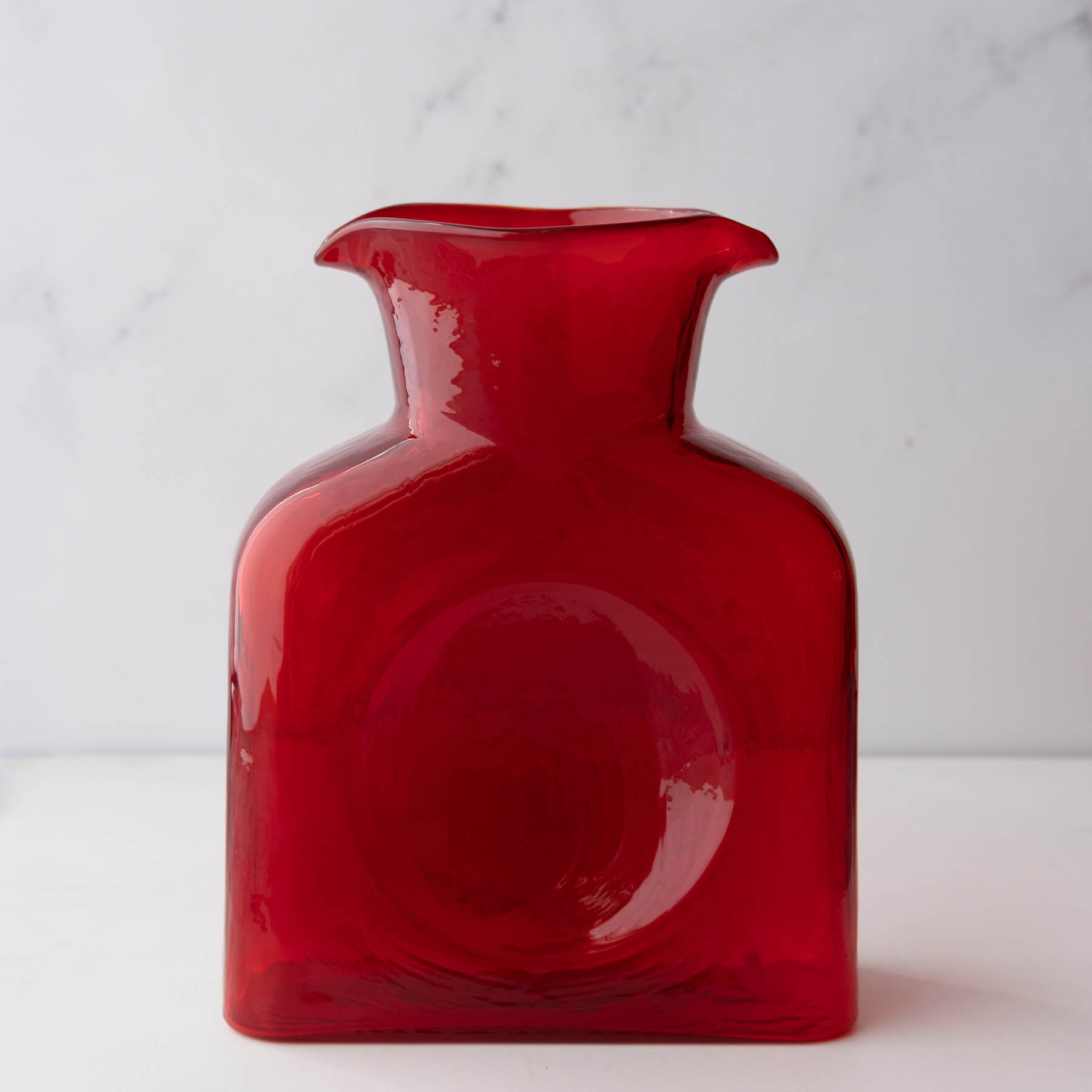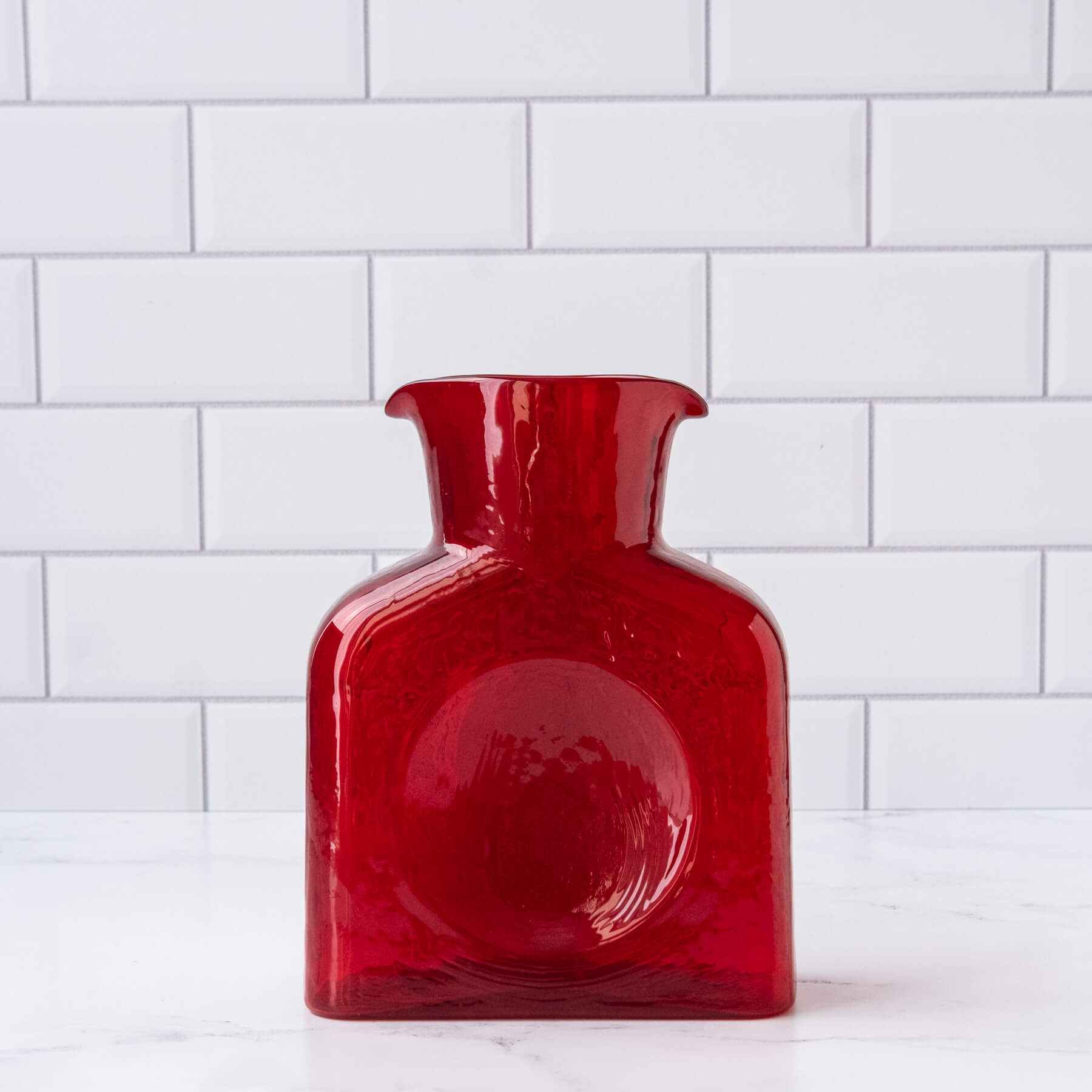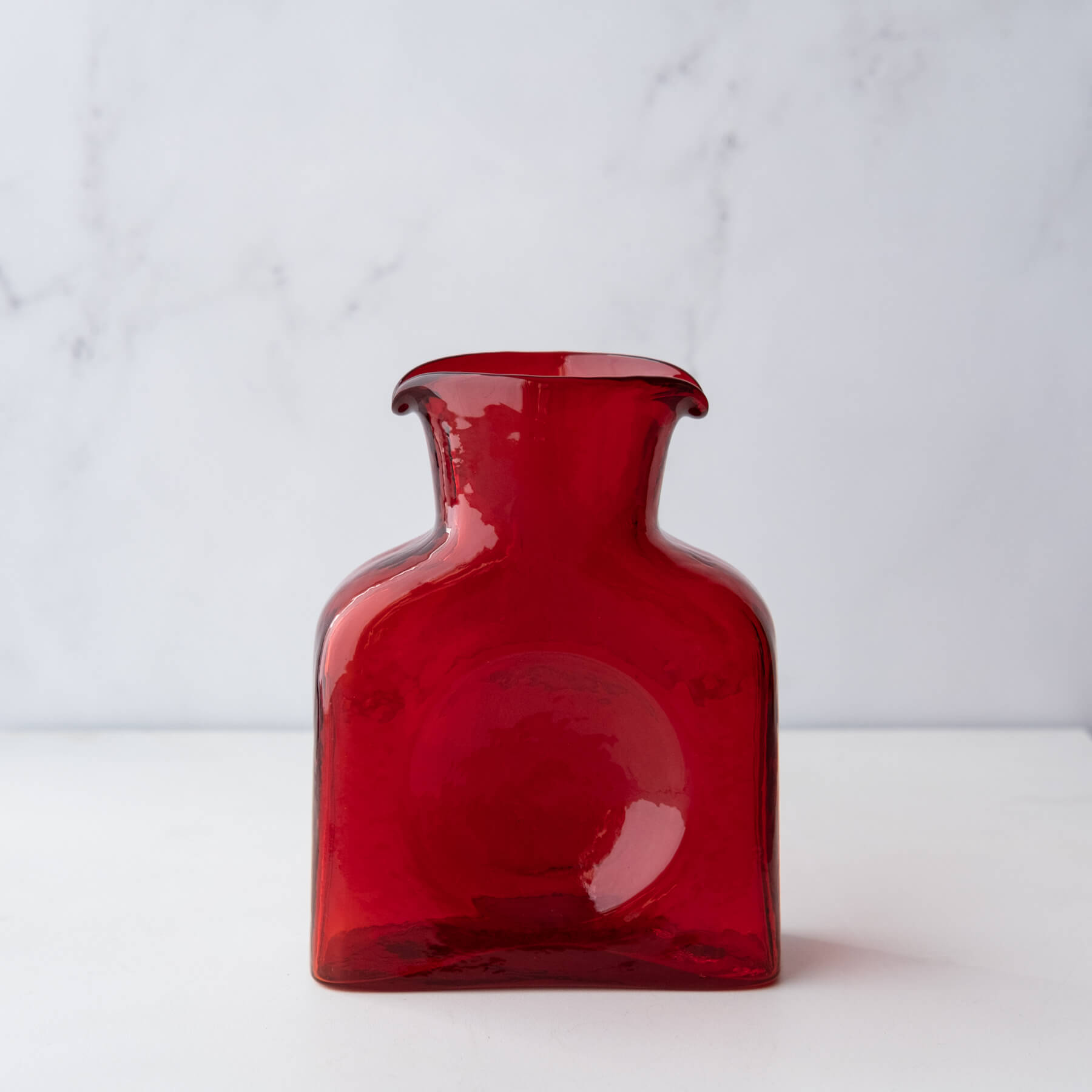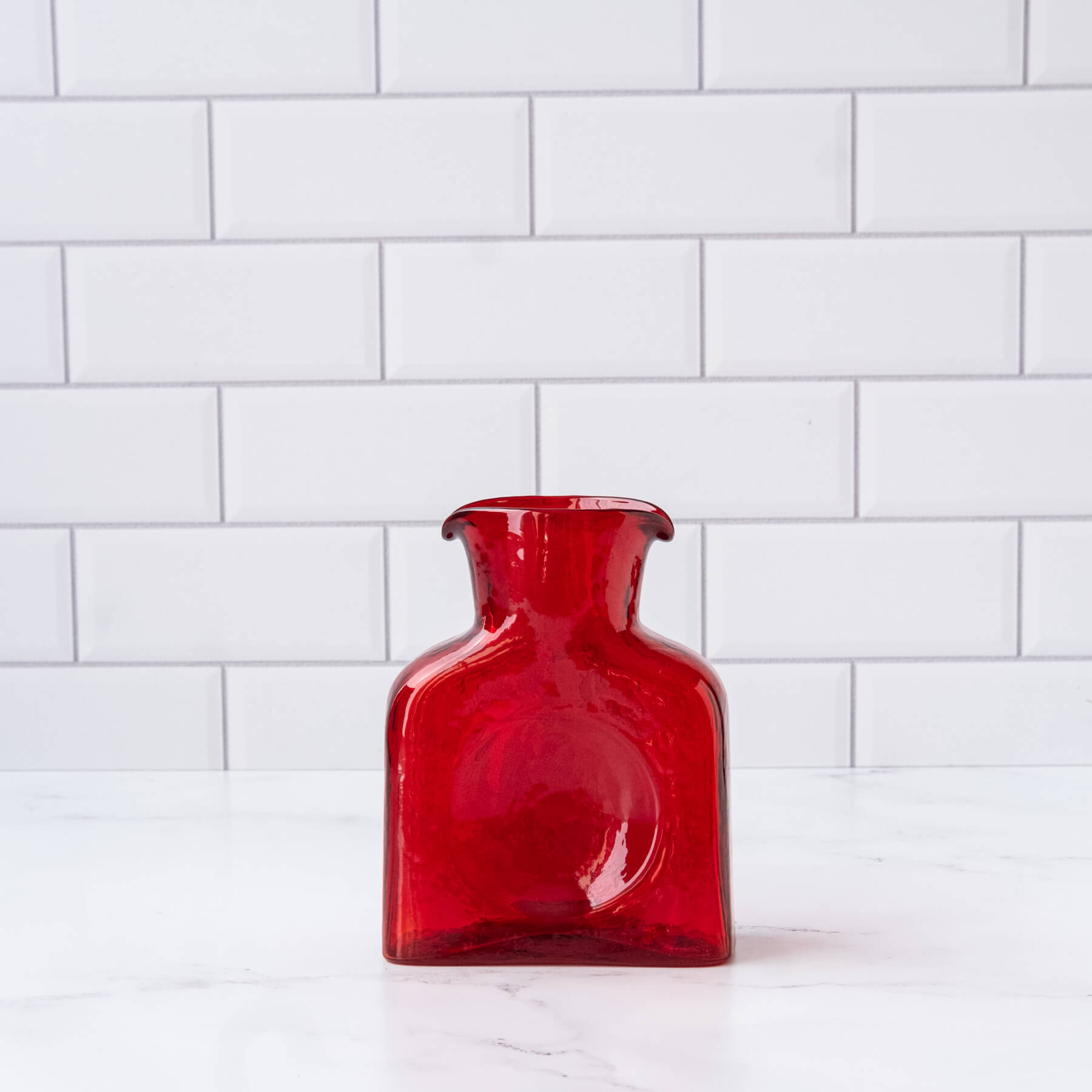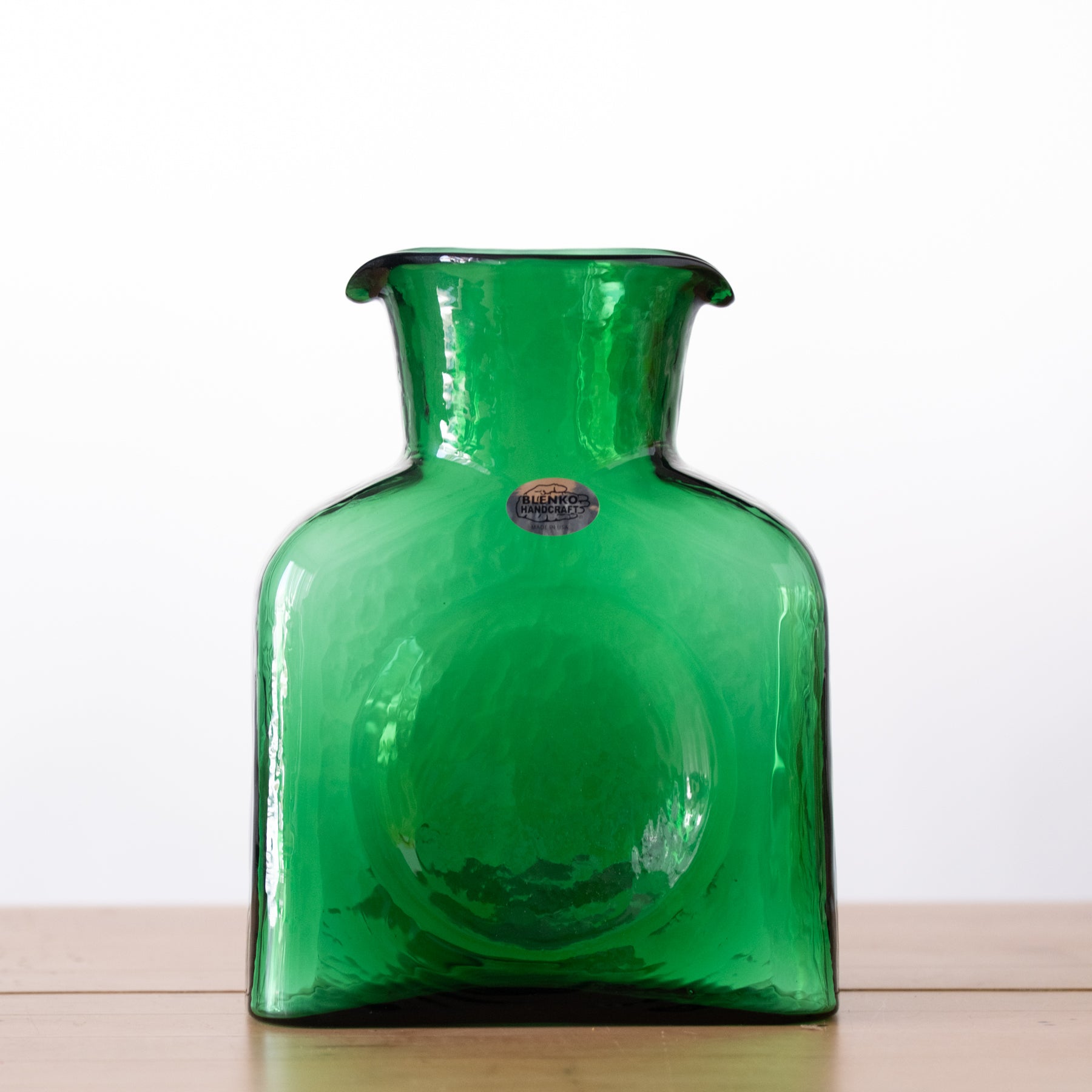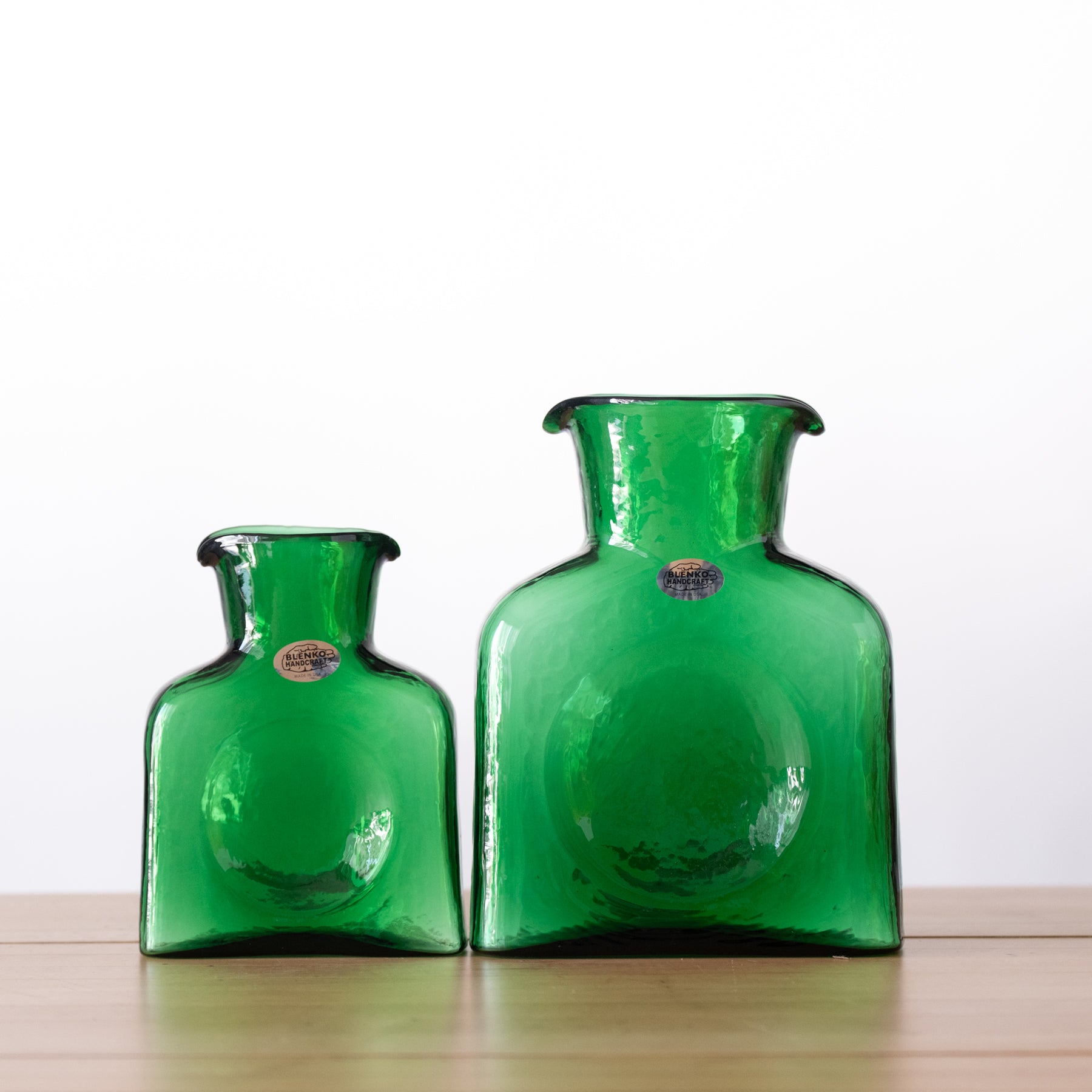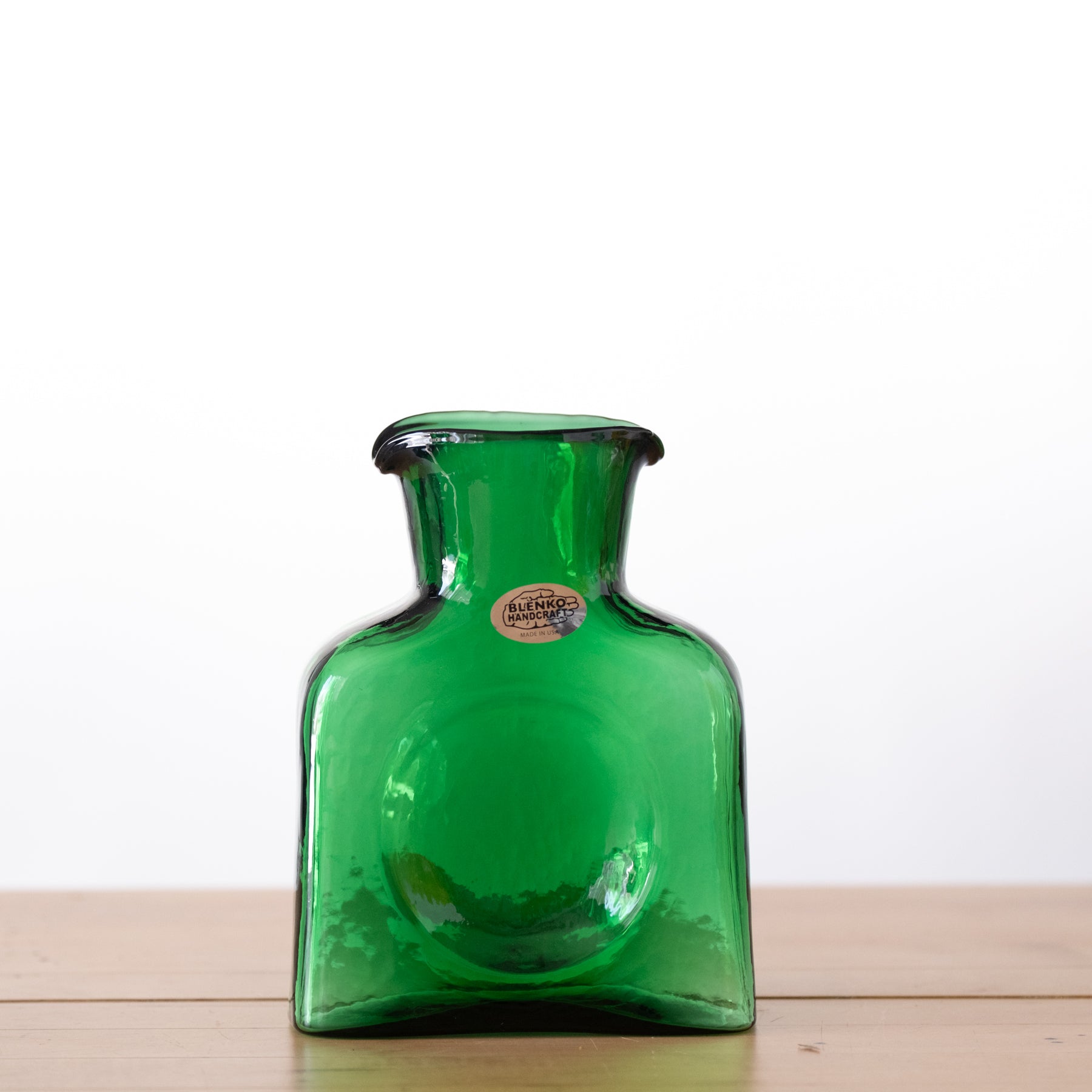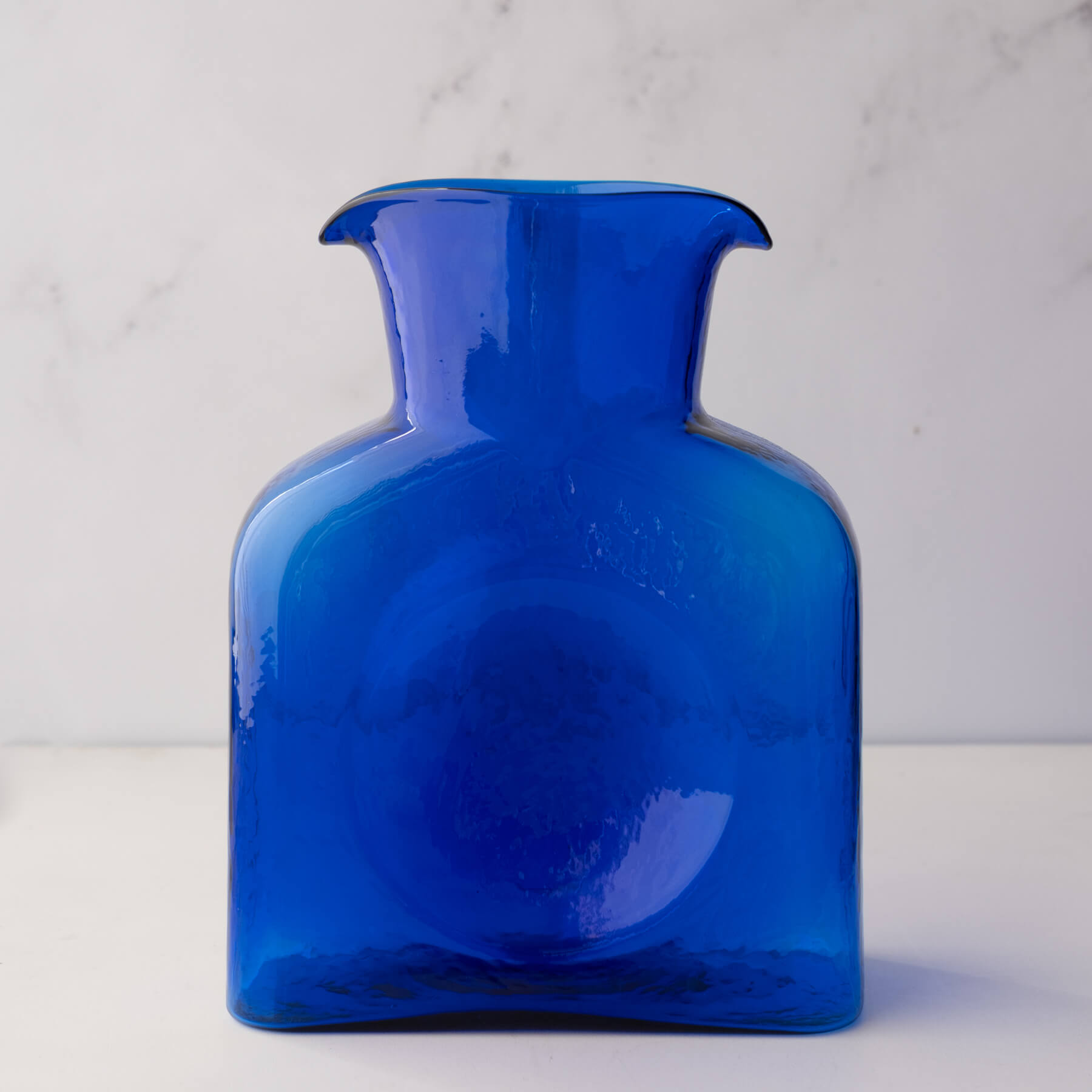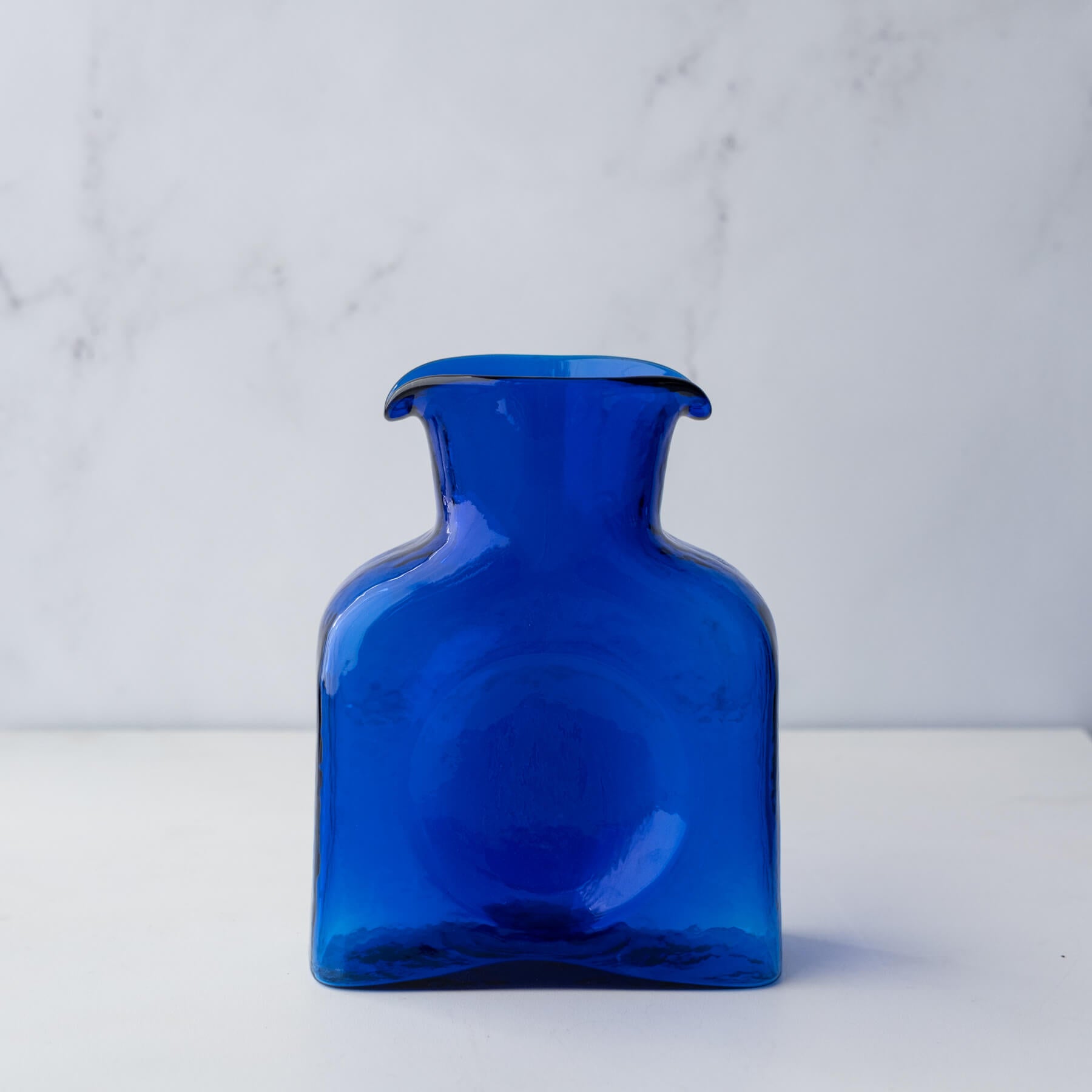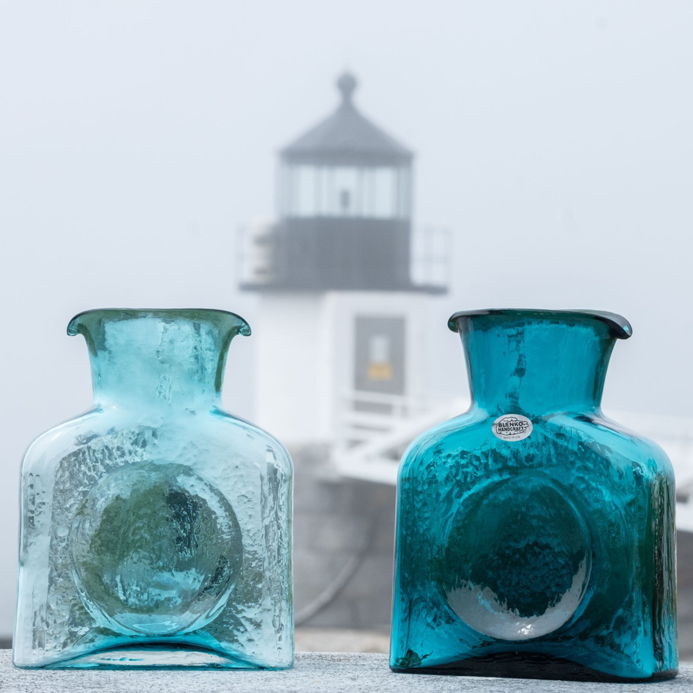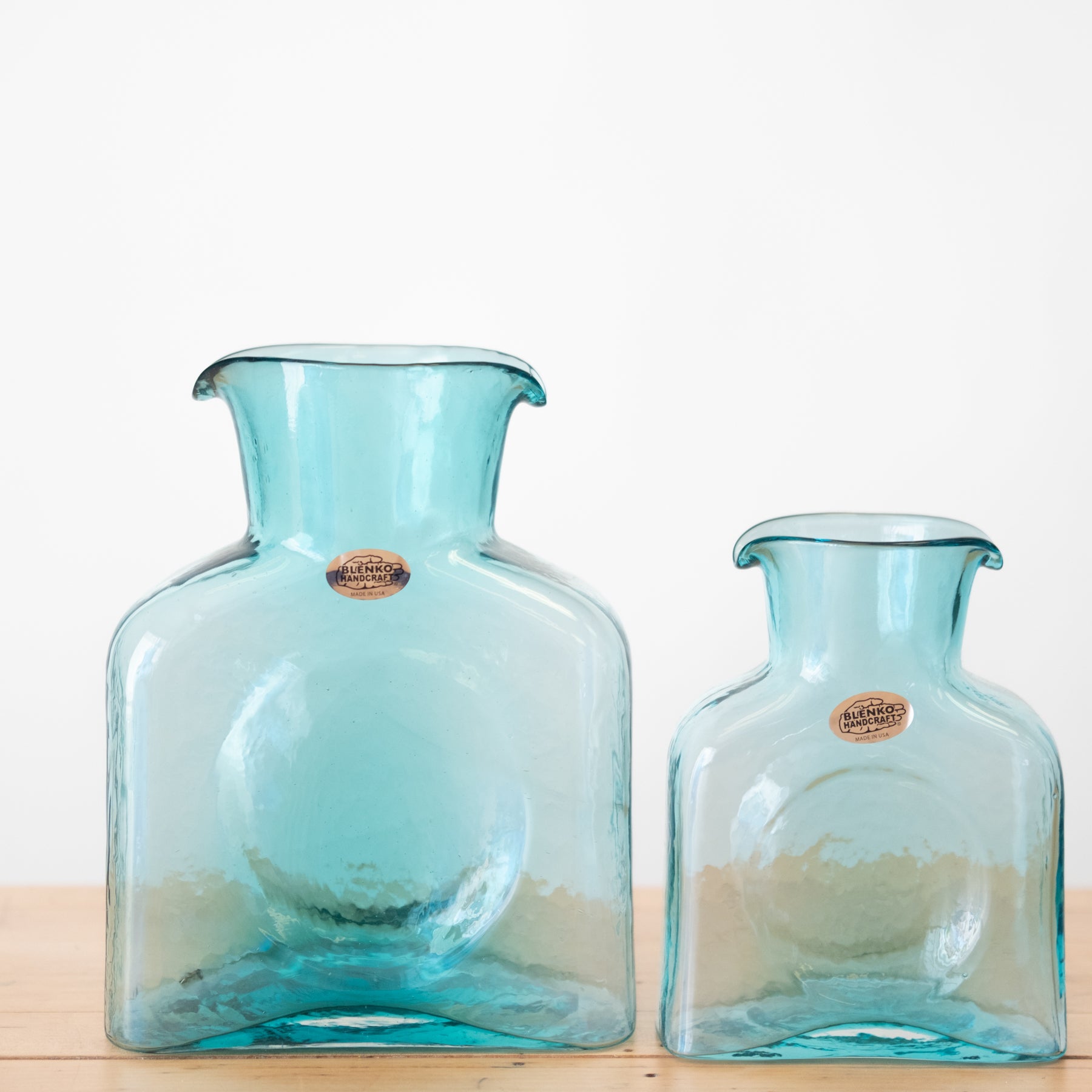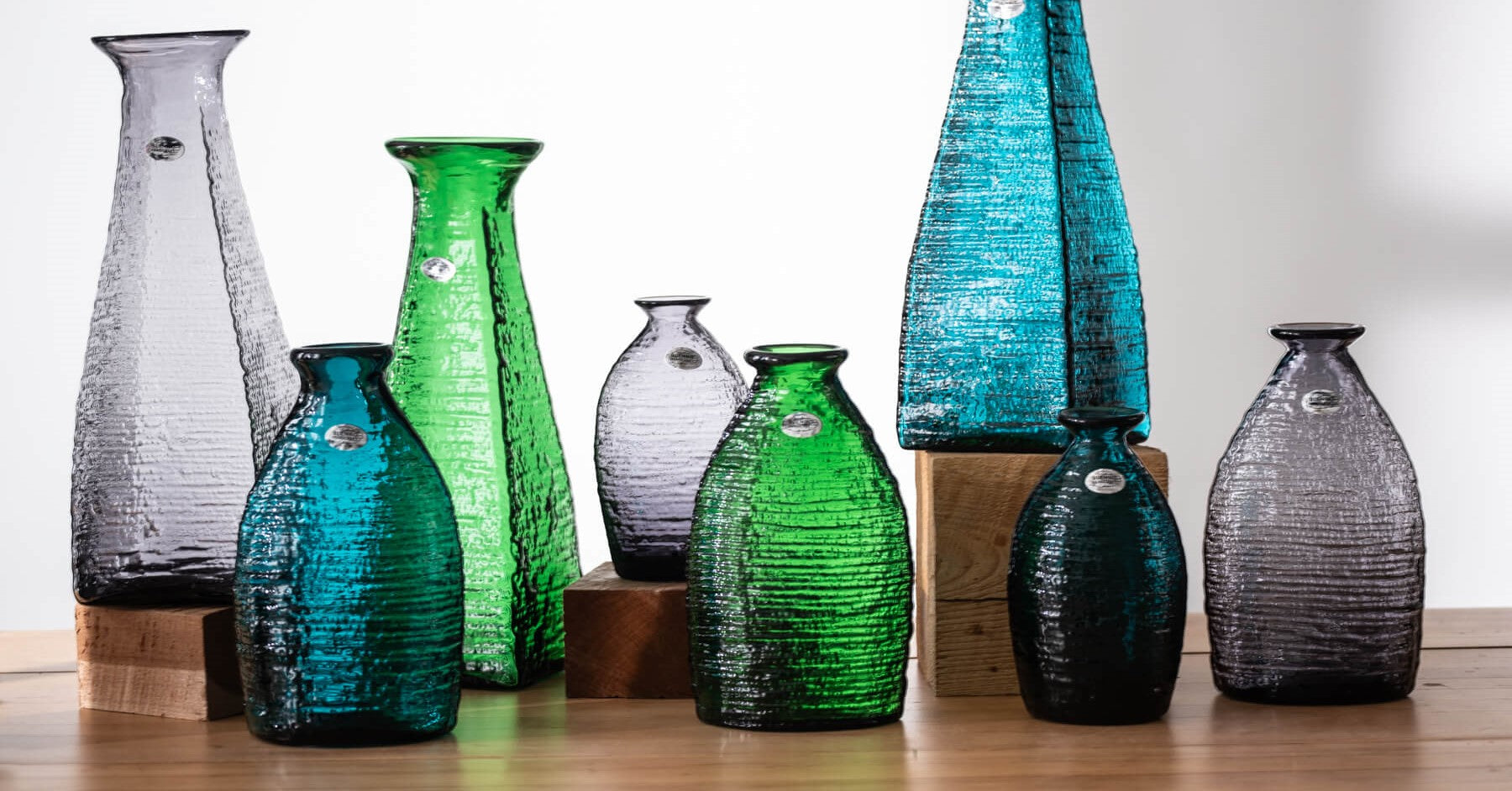
The Sound of Glass: How Blenko Captures Silence and Song
Glass is often thought of as something we see, but those who live with it know it can also be heard. Every piece carries its own voice, subtle and surprising — a quiet music shaped by fire, thickness, and form.
A Blenko water bottle, set gently on a table, releases a chime as clear as a bell. Thin rims on tumblers hum when touched, like a note struck on an unseen instrument. Even silence has texture in glass: the hollow stillness inside a vase, the hush of air sealed within a round base, the muted echo when fingertips brush its side. Each sound is delicate, but it lingers, reminding us that glass is not only visual but resonant.
The shape decides the song. A slender neck narrows vibration, raising the pitch to something bright and quick. A wide, heavy base deepens tone, collecting sound the way it collects color. Layers of thickness hold resonance longer, while thin walls release it in a fleeting whisper. These variations mean no two pieces sing alike — even those blown from the same gather will differ, because sound is as much about touch as it is about form.
Techniques leave their own signature. A pressed ridge might catch and amplify vibration; a hand-polished edge lets sound move smoothly, like water flowing over stone. When a maker leans into the pipe, adding one last breath, it is not only shape that changes but also the voice the glass will carry long after.
To listen to glass is to notice its quiet company. The way a pitcher clicks faintly when set down at breakfast. The way sunlight through a bowl adds not just brightness but the sense of stillness that follows after a bell is struck. These are the songs of the everyday, woven into life as softly as light across a room.
At Blenko, sound isn’t planned the way color might be, but it is always present. Each piece holds its own balance of silence and resonance, of echo and stillness. And when you bring it into your home, you may find yourself pausing not just to see how it looks in the light, but to hear how it moves through the air.
Because glass, in its own way, sings.








